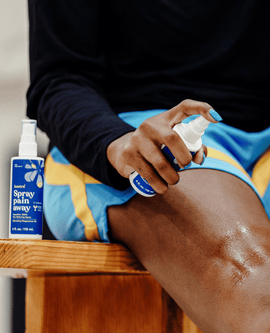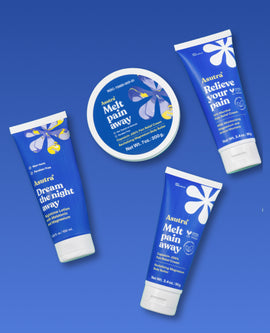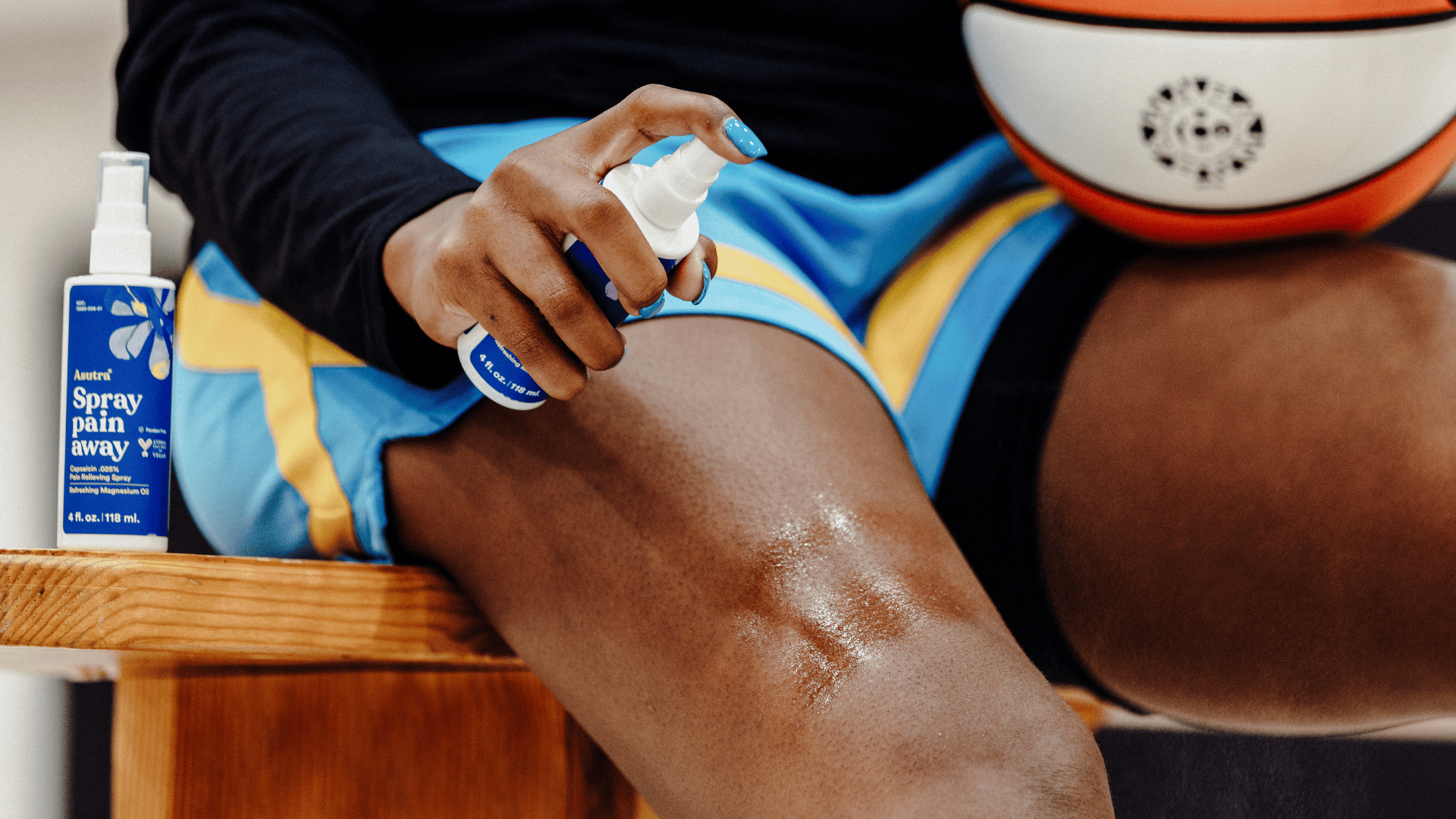Looking to relieve leg cramps, muscle spasms, restless legs syndrome, or any other body aches - naturally? Try a magnesium bath.
Why magnesium? And why in a bath?
It’s estimated that 2 out of 3 people living across the globe are magnesium deficient. Yet magnesium is critical for helping over 300 processes in your body function well: regulating blood pressure, synthesizing proteins, and monitoring muscle and nerve functions.
You can take magnesium via oral supplements. However, your digestive system may minimize and even prevent the overall absorption of the magnesium you’re taking. Research shows that the most efficient way to top up your levels (and feel great faster) is by using magnesium “transdermally” or topically. When applied to the skin, magnesium absorbs into your body, bypassing the digestive system and heading straight for your bloodstream and cells.
Soaking your body or feet in a warm bath allows magnesium chloride to absorb quickly into your skin, creating that transdermal magnesium absorption. This method bypasses the digestive tract, making the nutrient more bioavailable without overdoing it.
Research shows magnesium can help ease:
- Muscle and joint pain
- Leg cramps and muscle spasms – including restless legs syndrome
- Sleep issues (one of our customers said magnesium offers a “full body-melt” effect!)
- Stress
- Anxiety
- Migraines and headaches
- PMS symptoms including cramps
- Skin conditions such as eczema and psoriasis
Magnesium flakes vs. Epsom salts
If you’ve ever pulled a muscle, had a strenuous workout, or received a massage, you’ve probably been advised at least once in your life to soak in a warm tub of Epsom salts. It makes sense: for hundreds of years, Epsom salts have been a go-to treatment for easing all kinds of aches and pains.
And it’s been effective, at least in some ways.
But get this: over the last several years, more and more people are turning to an even better, all-natural remedy for managing their sore bodies: magnesium chloride flakes.
Let’s look at the molecular make-up of the two to understand why:
- Epsom salt is a compound of magnesium and sulphate; whereas
- Magnesium chloride flakes (sometimes referred to as “magnesium salt”) are a compound of—you guessed it—magnesium and chloride.
So yes, both products contain magnesium. And technically, both types of magnesium treat many similar ailments.
But there is a small yet critical difference between them. Put simply, magnesium chloride flakes absorb more easily into the body than Epsom salts. As a result, magnesium chloride flakes have been shown to:
- Provide more concentrated bio-available magnesium into the body, and
- Create more intense and longer-lasting effects.
Now, we’re not saying Epsom salts don’t have benefits—they most certainly do. In fact, if you look at the ingredients list of our own magnesium chloride flakes, you’ll see that it also includes magnesium sulphate. However, if you’re going to choose one over the other, magnesium chloride flakes are where it’s at.
“Pure relaxation."
I can't believe how well this stuff works. I put an entire 2 lb. container with a half cup each of baking soda and borax in my tub, and within 15 minutes I was almost asleep! I felt blissed out for hours afterwards.” – Liam H.
How to soak using magnesium chloride flakes
You can take a full-body bath or if you don’t have a tub, don’t like baths, or are pressed for time, try a foot soak. A magnesium soak is a simple yet highly rewarding self-care ritual!
- For a foot soak—dissolve ¼ to ½ cup of flakes in warm water in your foot basin (or fill your tub part-way so your feet and lower legs are submerged).
- For a full body soak—dissolve 1 to 2 cups of flakes in your tub.
Want to make it even better? Try:
- Adding a few drops of your favorite essential oils. Clary sage and peppermint soothe sore muscles post-workout. Lavender and chamomile calm your mind and body before bed.
- As Liam H. did, add a half cup each of baking soda (which softens skin and deodorizes) and borax (which softens water and helps the magnesium soak in even deeper).
Soak for at least 15-20 minutes to get the full benefits, or even longer if desired.
Pro tips
- Use warm—not hot!—water. Water that is too hot will make it harder for your skin to absorb the magnesium. Warm water does a better job at opening your pores, allowing the magnesium through your skin, into your bloodstream and cells.
- Stay hydrated. Salt baths can be dehydrating, so stave off any lightheadedness by drinking a full glass of water before and after your soak.







